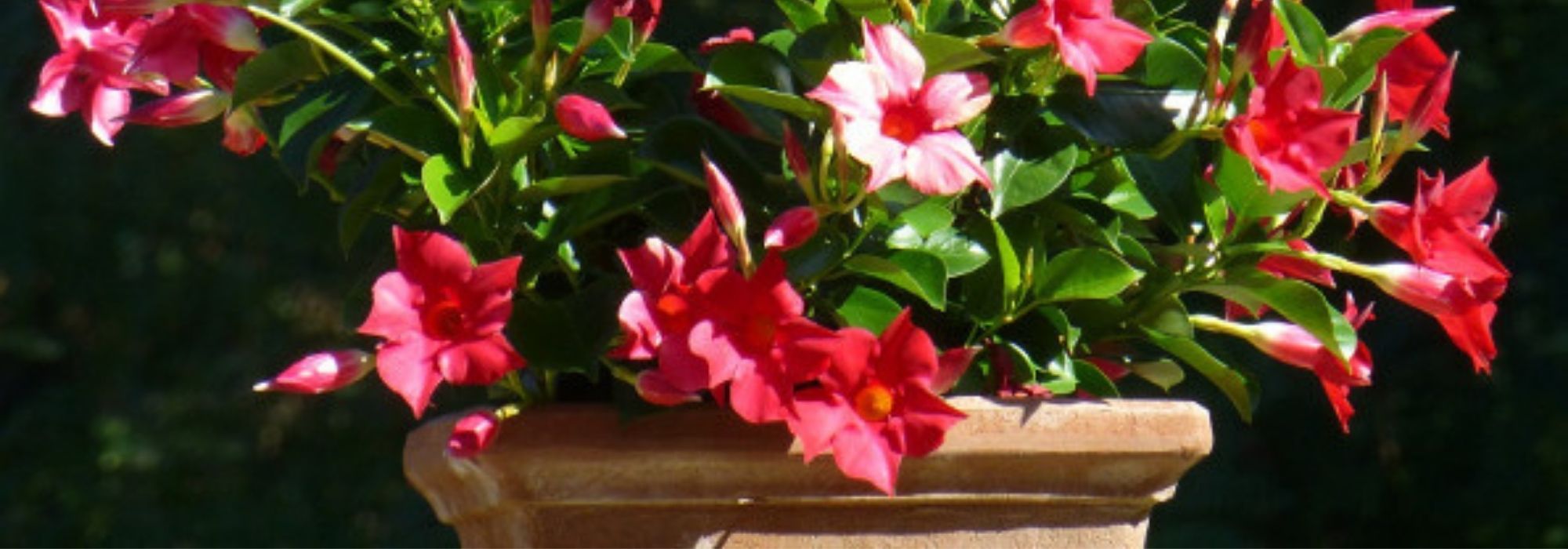
How to grow dipladenia in a pot?
Cultivation tips and tricks
Contents
Also known as “Brazilian Jasmine”, the dipladenia or mandevilla is a very floriferous climbing plant. With its evergreen leaves of a beautiful glossy dark green, it offers a long flowering period, from May to September, or even longer depending on the climate. Shaped like corollas, divided into 5 lobes that are both wide and spreading, its flowers can reach between 5 and 10 cm in diameter and are gathered in clusters.
Absolutely stunning for seasonal decoration, the varieties of dipladenia come together in a festival of colours – ranging from bright red to pristine white, including candy pink and chick yellow. Discover our tips for successfully potting it and adding colourful touches to your terrace or garden.
Where, when, and how to plant dipladenia in a pot?
If the sowing period for a mandevilla in open ground extends from March to May, growing dipladenia in pots requires a quick repotting just before its flowering: indeed, the pot provided at the time of purchase will quickly become too small. At this stage, prefer a pot with drainage holes at the bottom, 30-40 centimetres in diameter, to encourage growth.
- Place a 3 cm layer of clay balls at the bottom of the pot, before covering them with a cloth so that the compost does not block the drainage holes during watering.
- Next, soak the root ball for 5 minutes in water to rehydrate it if necessary.
- Place the dipladenia on the cloth.
- Add compost underneath if needed; the base of the bush should be level with the surface of the pot. Fill around the root ball with compost. Choose one that is rich, consistent, and well-drained. There is ready-to-use compost specially designed for dipladenia; if you wish to make it yourself, mix one third good soil, one third compost for flowering plants, and one third sand or pumice.
- Finally, water and mulch.
Native to South America, dipladenia requires a temperature around 20 °C to grow and a good humidity level: pot cultivation allows it to be brought indoors in winter or during particularly cool nights (8-10 °C). In summer, the mandevilla in pots enjoys a bright location, without direct sunlight. In all seasons, it should be protected from strong winds.

Note: Toxic if ingested, dipladenia is also irritating to the skin. It is best to wear gloves or wash your hands after planting and caring for it.
Read also
10 tips to successfully grow dipladeniaWhich varieties of dipladenia to grow in pots?
- The Dipladenia Diamantina ‘Jade White’ should be pruned to 40 cm in all directions to encourage the growth of its large white flowers from May to October. This is similar to the same varieties that offer red flowers (‘Jade Scarlet’ or ‘Jade Red’) and pink flowers (‘Jade Rose’ or ‘Jade Pink’).
- The Dipladenia Diamantina ‘Opale Fuchsia Flammé’ or ‘Opale Orange Coral’ should be pruned to 60 cm high and 40 cm wide to fully enjoy its flowers, which are pink and orange, respectively.
More generally, pruning a dipladenia involves removing its faded flowers to stimulate the appearance of new ones. Therefore, we recommend pruning at the beginning of spring, although this can also be done during repotting. During its growth period, simply provide a stake for its long stems.
- The White Lofos is a fast-growing variety that can reach 3 metres in all directions: it looks stunning from a large planter extending over a vertical trellis.
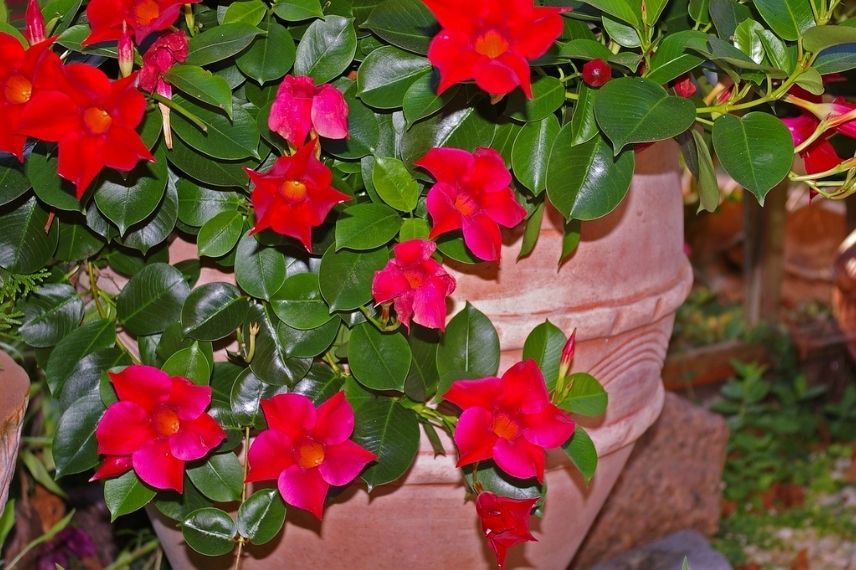
Discover other Dipladenia
View all →Available in 1 sizes
Available in 0 sizes
Available in 2 sizes
Available in 1 sizes
Available in 2 sizes
Available in 1 sizes
Available in 1 sizes
Available in 1 sizes
Available in 1 sizes
Available in 1 sizes
What care does dipladenia need?
Extremely greedy, the dipladenia in a pot requires fertiliser every 3 months, from March to October. Scratch the surface and water immediately after adding the growing medium. Repotting, on the other hand, should be done at the beginning of each spring.
When it comes to watering, you need to provide water to the plant regularly, as its woody climbing stems elongate – in other words, from spring to mid-summer. During full flowering, you can space out the waterings, reducing them to 2 to 3 times a week. Ideally, prefer rainwater, with a neutral pH, over tap water, which is often too chalky for this plant.
In summer, as well as during dry periods that encourage flowering in the dipladenia, you can wait for the root ball to dry completely between waterings. In any case, avoid stagnant water, which will cause the roots to rot.

What are the common diseases of potted dipladenia?
Growing conditions often explain the diseases and pests of potted dipladenia:
- Cold results in yellowing and leaf drop. In winter, it should be moved to a warmer, brighter room. In summer, water at its base and mist the foliage daily in the evenings.
- Dryness encourages colonies of red spider mites, which pierce the leaves and shoots. The plant should be soaked to hydrate the root ball and an insecticidal soap should be sprayed.
- During growth, colonies of aphids may favour the sap-filled shoots, while whiteflies will settle under the leaves. In both cases, treatment with insecticidal soap is necessary.
- Humidity causes white spots to appear on the flowers. Avoid wetting them and soak the plant during watering.
- Excess water hinders growth. Remove the saucer from under the pot and place the dipladenia out of the elements.
→ Find our article to identify and treat diseases and pests of Dipladenia
- Subscribe!
- Contents



































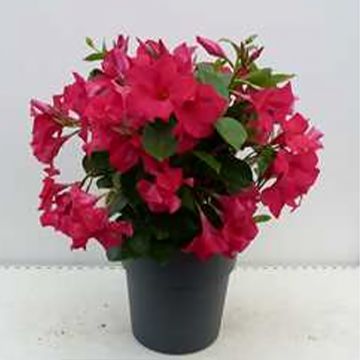
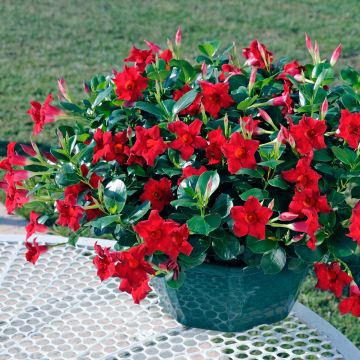
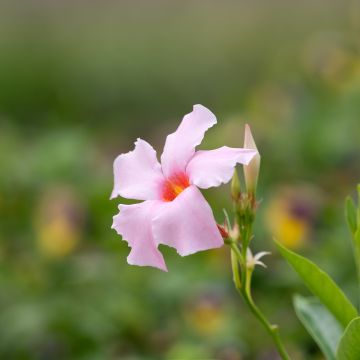
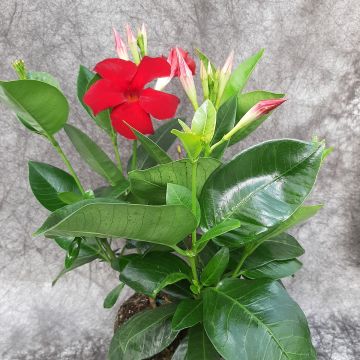
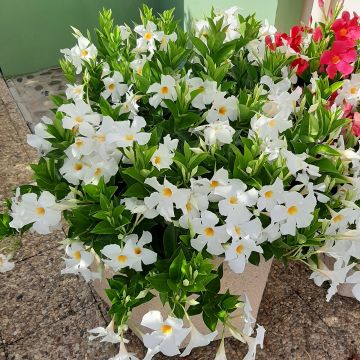
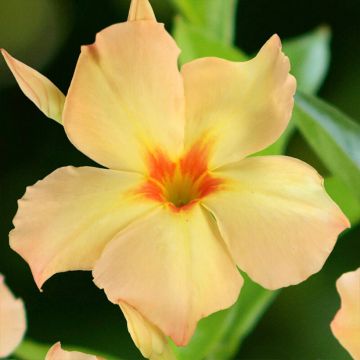
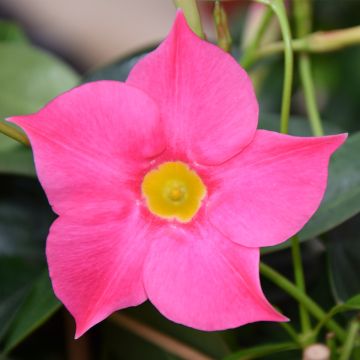
Comments